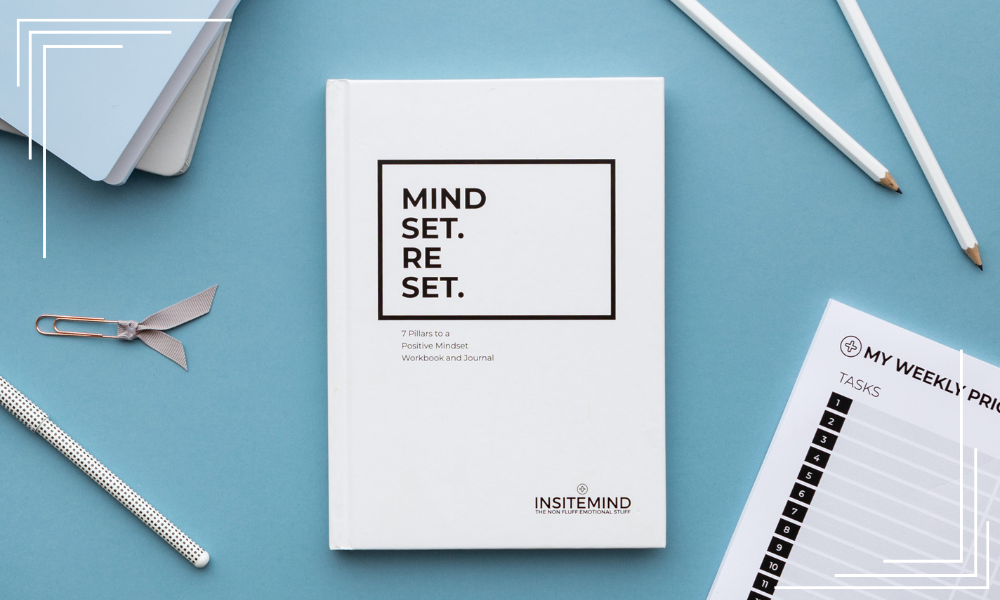THE NON FLUFF EMOTIONAL STUFF™
How Momentum Fuels Negative Thinking - and How to Stop the Spiral
Have you ever noticed how one small negative thought can snowball into a full-blown bad day? Maybe you made a mistake at work or had a tough conversation, and before you know it, you’re replaying every past failure in your mind, questioning your worth, and spiraling into self-doubt. That’s not just coincidence—it’s momentum in action.
Let’s break down how negative thinking gathers speed and what you can do to stop it before it takes over.
The Power of 17 Seconds
Abraham Hicks, a well-known intuitive speaker, explains momentum through a simple idea: thought attracts thought. According to this concept, if you focus on a negative thought for 17 seconds, your brain invites another one to join. Let that second thought stick around for another 17 seconds, and another one shows up. Continue this pattern for 68 seconds, and you’ve now created a powerful emotional and mental momentum that’s hard to slow down.
Negative momentum doesn’t just affect your mood—it changes your outlook, your energy, and even the way you interact with others. Like a runaway train, once it’s moving, it’s difficult to stop.
The Hill and Car: A Visual for Your Mind
Picture this: you’re at the top of a hill with a car in neutral. You give it a little push. At the very top, it’s easy to stop the car. But if you wait, let it roll, and try to stop it halfway down or near the bottom—well, good luck! It’s picking up speed and power.
Your negative thoughts are just like that car.
Stopping them early is the key. The further they go without being checked, the harder they are to control. That’s why we need to find the “handbrake” for our thinking.
Catching the Thought: STOP or HELLO
When you sense negative thoughts creeping in, interrupt them.
Say STOP.
Say HELLO.
These words act like speed bumps for your brain. They give you just enough pause to become aware of what you’re thinking and feeling. This awareness is the first step in changing your mental direction.
Question the Thought
Once you’ve slowed the mental momentum, start questioning your thoughts:
• Is this thought reasonable?
• Would I say this to my best friend?
• What could I say to myself instead?
This reflective practice helps you shift from self-criticism to self-compassion. It’s not about being unrealistically positive—it’s about being fair and kind to yourself.
Journaling: Your Mind's Mirror
To truly understand your patterns, you need to reflect regularly. That’s where a “Thoughts and Emotions Journal” comes in.
Here’s how to use it:
1. Situation – What triggered the feeling?
e.g. I made a mistake during a meeting.
2. Feeling – What emotions did you experience?
e.g. anxious, embarrassed, frustrated.
3. Body Response – How did it feel physically?
e.g. tight chest, racing heart, flushed face.
4. Initial Thought – What was your first reaction?
e.g. I’m not good enough. I always mess things up.
5. Unhelpful Thinking Style – Can you identify a pattern?
e.g. catastrophizing, black-and-white thinking.
6. Source of Belief – Where might this come from?
e.g. my teacher used to say I was careless.
7. Evidence Check – Is your thought accurate? What’s the full picture?
e.g. I’ve done well in many meetings before. One mistake doesn’t define me.
8. Alternative Thought – What’s a healthier perspective?
e.g. Mistakes help me learn. I’m capable and still growing.
This process isn’t just reflective—it’s transformational. Over time, it rewires your brain for more balanced thinking.
Momentum Can Work for You, Too
Remember, momentum isn’t the enemy—it’s just a force. If negative thoughts gain power in 68 seconds, so do positive ones.
Start small:
• Focus on something you’re grateful for.
• Think of a time you handled a challenge well.
• Tell yourself something kind.
Hold that positive thought for 17 seconds. Then another. And another. Watch the shift begin.
Final Thoughts
Negative momentum is powerful—but not unstoppable. The key is catching the thought early, using tools like journaling and reflection, and practicing new, helpful ways of thinking. Like any habit, it gets easier with time. And once you build momentum in the right direction, the results can be just as powerful—only this time, empowering instead of draining.


Written by Alisa Pettit
It’s never too late for a lane change. Insite Mind is the brainchild of one woman who after a decade spinning in the hamster wheel of the accounting world gave it up to live out her heart work. But it didn’t come without challenge and a little nudge from the universe in the form of a book Dealing with Difficult People. Upon opening it Alisa was surprised to find in black and white text “maybe it’s you”. So after several ego deaths and many personal development books along the way Alisa Pettit found her way to coaching. Now a fully fledged positive mindset coach and personal mastery guru Ali’s work helps people find their way through mindset teachings.
CHECK OUT OUR MOST POPULAR BLOGS













